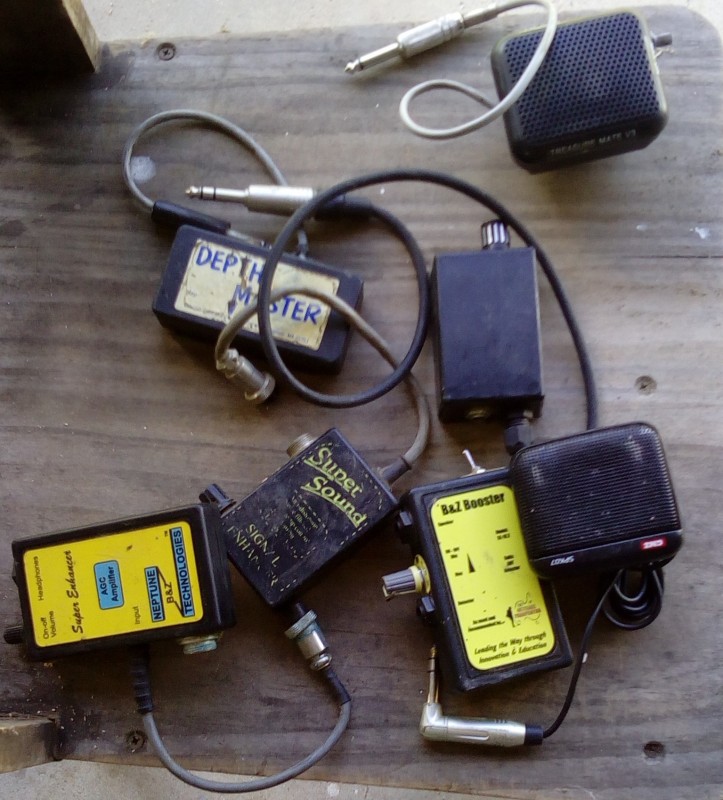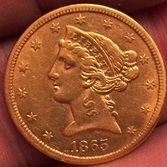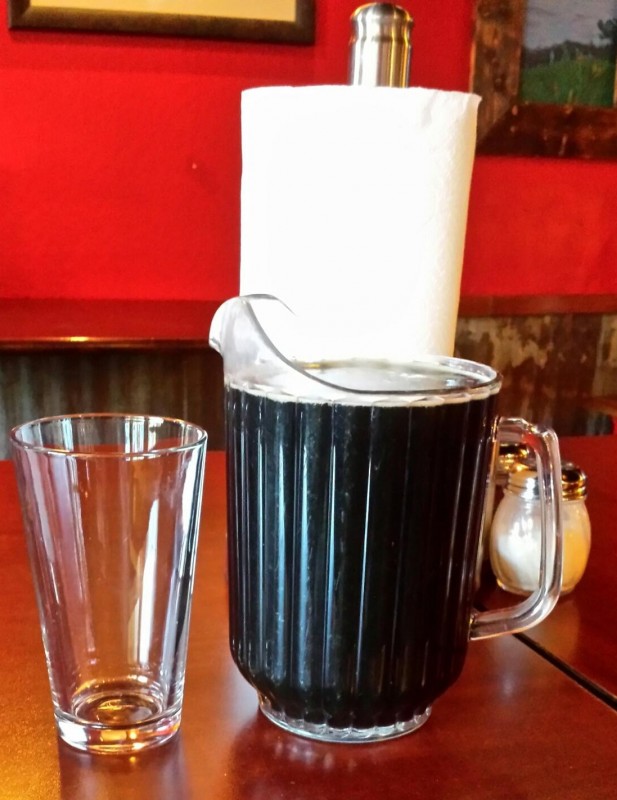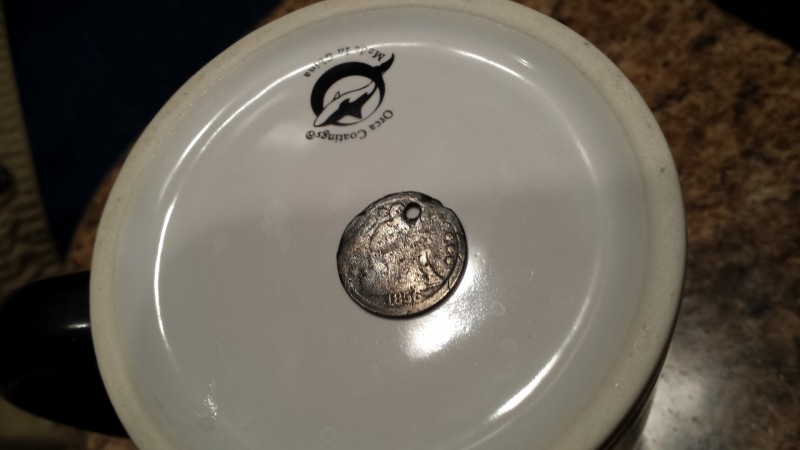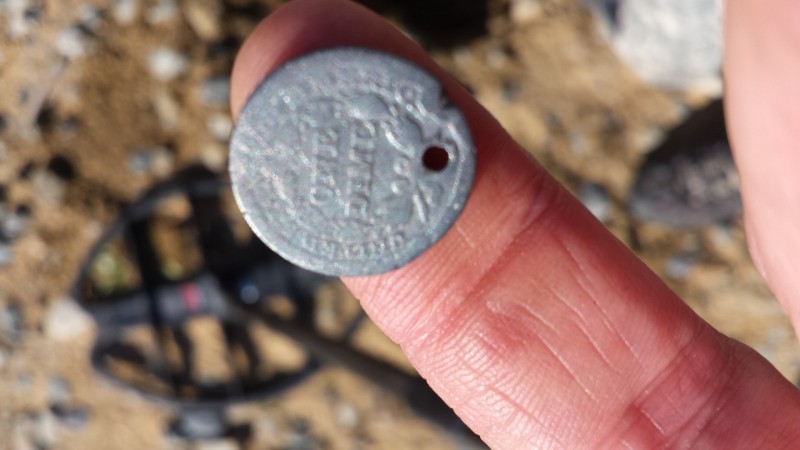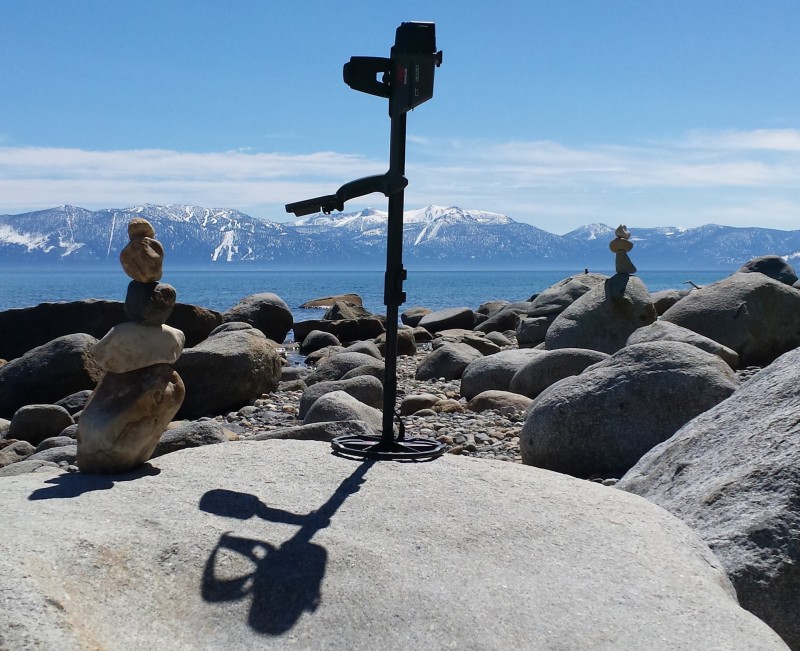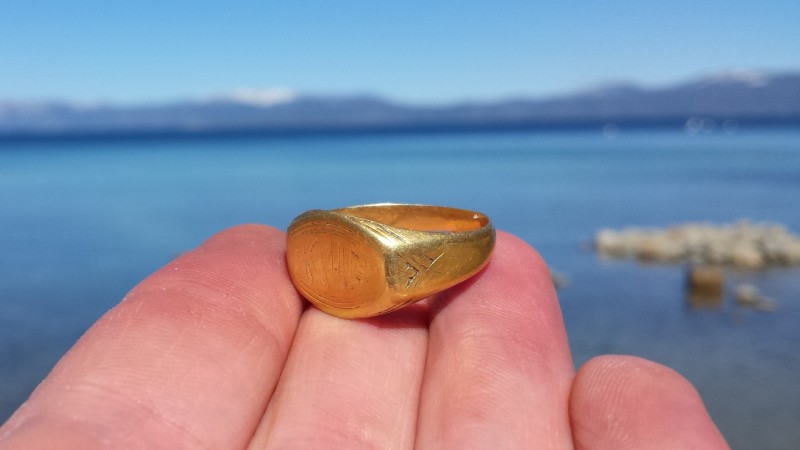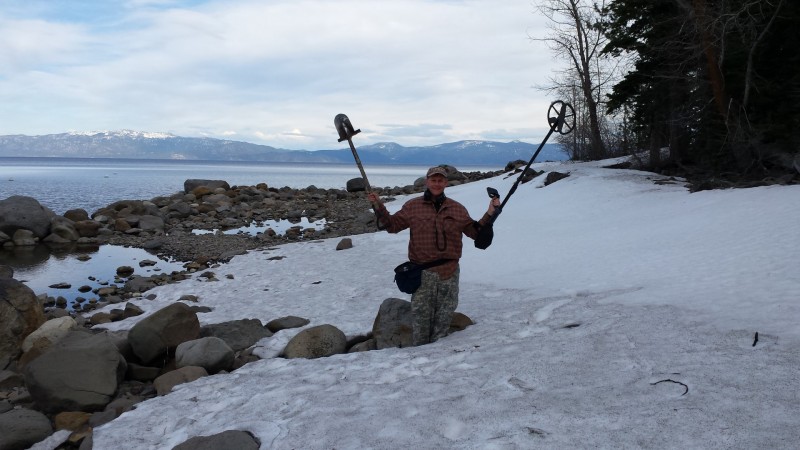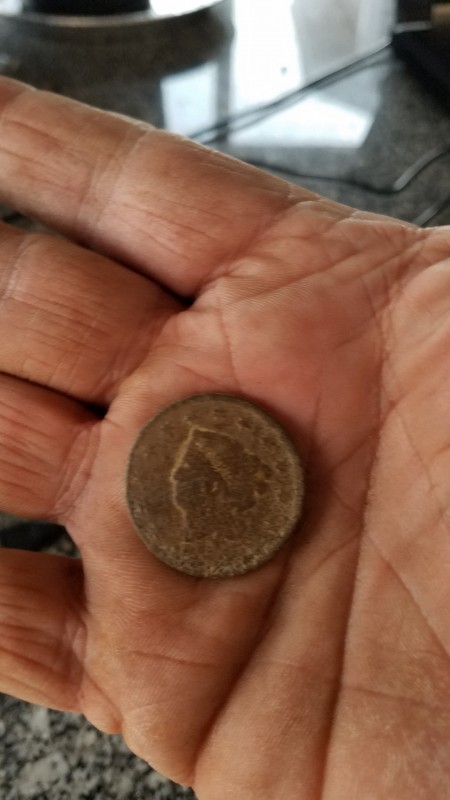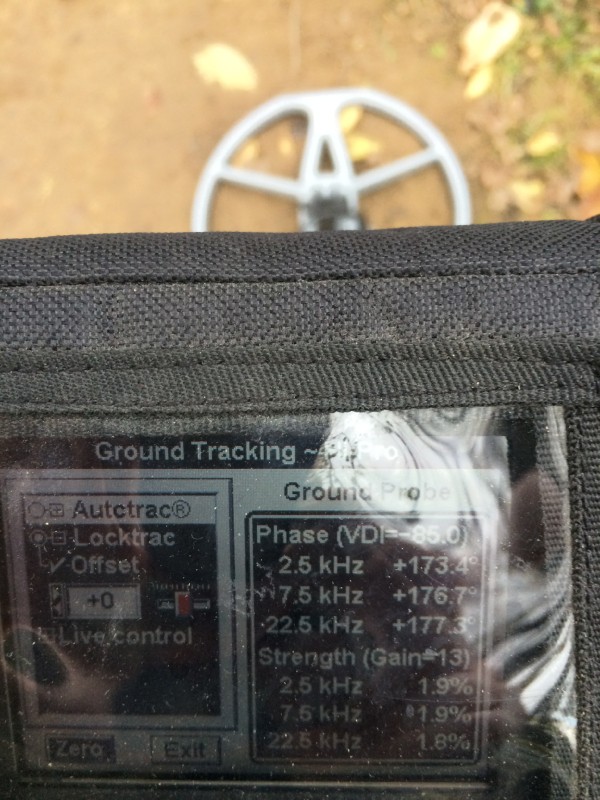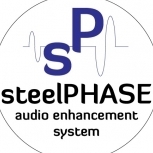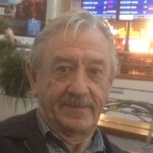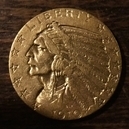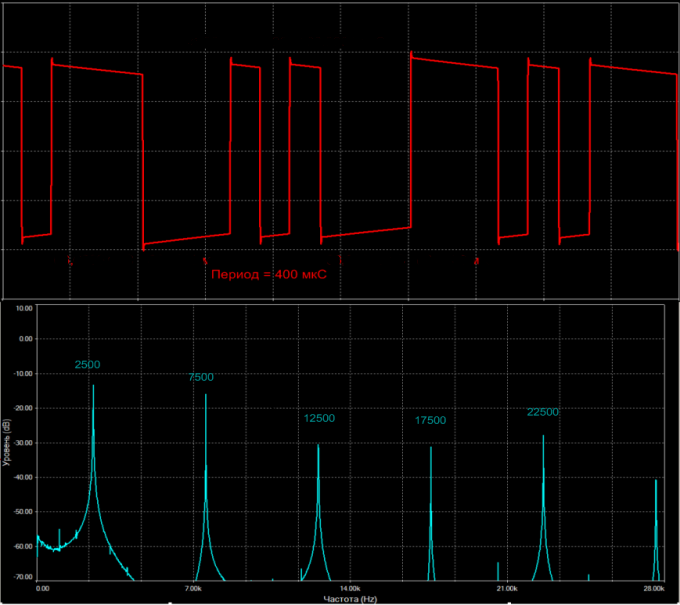Leaderboard
Popular Content
Showing content with the highest reputation on 02/18/2019 in all areas
-
Like Steve said I do have a ORX that should be here maybe Wednesday of this coming week. Here is this old courthouse that sits in the middle of a city block and I have permission to detect. The lady who I guess you’d call her the overseer said others has detected it but found only bottle caps . If I do find any coin I plan on donating to their history display they have. Chuck4 points
-
4 points
-
I recently posted this to another forum and thought it might help benefit others and maybe generate some interesting discussion here. A booster can only amplify whatever the detector audio delivers no matter what anyone try’s to tell you. The inbuilt booster speaker system in the Minelab GPX 4500, GPX 5000 is too coarse for effective use via the Target Volume control, this same control is also used on the GPZ 7000 in conjunction with the WM12 and is also too coarse! I originally popularised the booster speaker concept when developing a series of instructional videos, looking for a way to obtain good audio that allowed ambient noise of a goldfields environment to also come through so viewers could experience as close as possible the way a detector sounds when in use. In conjunction with this I also discovered the benefits of removing the immediate audio from your ears and placing it further away allowing faint signals to come through (similar to a Television sounding loud in the kitchen compared to being right in front of it). Our ears are designed to collect sound, especially sound that is further away, our ears are also more sensitive to variation in pitch similar to our eyes are to movement so being able to hear the threshold at all times as a reference point is very important, but not at the expense of those around you and small target signals. The aim with a booster speaker is to lift up the overall volume of faint deep targets without drowning everything else out, as such in less trashy sites a higher volume can be used in conjunction with the correct threshold level. You need to set the volume to compliment the threshold, which needs to be smooth and stable, if someone can hear your threshold miles away you’re doing it all wrong and negating any advantage as well as driving other operators around you nuts. Best way to go is to set the detectors settings to be smooth and stable, I tend to use conservative Sensitivity/Gain settings along with Volume and Threshold. The Target Volume needs to be kept low to allow the booster to drive the audio without causing distortion, this is especially important on the GPZ 7000. If your detector Target Volume is set to aggressively the booster is then going to amplify that aggressive distorted audio. The threshold needs to be smooth to the ear to start with, if it stutters the amplifier will exacerbate that, if it is too loud it will drown the audio as you boost it. The B&Z booster is best used for single or twin speakers, it has a very good range of amplification with hardly any distortion. This is especially important because you need to use the booster to adjust the overall audio to suit the ambient noise conditions, in quiet conditions you lower the booster volume so the threshold is not dominating, if its windy then you increase the volume so the threshold can be clearly heard. The B&Z booster runs on 2 x AAA alkaline batteries which should last up to 3 weeks at 6 to 8 hours per day, it is in a plastic housing to cut down on any excess metal on your body. The B&Z can be used with headphones, to do so the volume of the detector needs to be lowered so the booster volume can be lifted above 2 1/2 to 3 to avoid noise and hiss from the potentiometer, with the GPX and GPZ machines this can be as low as 6 or even lower if required depending on the sensitivity of the headphones being used. Higher tones tend to require less volume, lower tones more, lower tones (30 and down on Minelab PIs and ZVT) are generally better heard through headphones rather than speakers, this is due to all the natural low frequency noises heard in natural ambient environments, Noise cancelling headphones really compliment low frequency Tones. The audio of the Minelab GPX and GPZ machines is converted to analogue via the speakers, boosted speakers tend to iron out the steppy digital nature of the Minelab audio, this helps a lot with running less noise floor filtering through the Stabilizer or Audio Smoothing controls, which is were all the edge of detection depth performance lays. The B&Z only ever magnifies the pure audio of the detector with no colouring of the audio through filtering, you only ever hear the “pure” audio intended by the designer of the metal detector. Call me a purist but that’s the way I prefer to hear my detector. Hope this helps JP3 points
-
3 points
-
Air testing with my ORX I got the following in coin fast: Clad dime 92/high tone Zinc penny 86/high tone 1943 penny 91/high tone My wedding band sounds off on the midtone. Per the manual bronze coins should read lower, between about 63 to 82. I have only used it twice and this is my first XP product so you will need to wait for someone else's report for the definitive answer. Regards, MT3 points
-
3 points
-
I've only had my 800 for about a week, so I made some simple ID cards using Steve's graphic, to get familiar with the machine. I have extras, and with Steve's permission, I'm offering 1 to the first 50 interested. These are simple, pocket size, laminated cards, with large bold font. Target IDs on the front, detector settings menu on the back. Edit 2/19/19 by Steve Herschbach. The offer to mail you one of these free is long past. Just download the pdf, print, and laminate your own. idcardfinal.pdf2 points
-
I would suggest that the 705 is a very good prospecting detector where soils conditions will allow , however in australia thats not always going to be the case and you may struggle to get much depth and be driven to distraction by our hot rocks.The latest wave of high frequency vlf units are being used here in certain locations to pick up the small pieces missed by the PI units or on exposed bedrock where targets are close to the coil. I think if i had to pick a detector i see most when im out and about it would be the sdc 2300 . With the gpx variants a close second and in West Australia the Gpx models reign supreme.. For my goldfields the sdc is usually very stable , gets reasonsble depth is eay to use and finds the bits that the larger PI units may leave behind . I can and have used plenty of vlf detectors in these places but in Australia , more than possibly anywhere else you may well end up feeling you’ve brought a knife to a gunfight . Having said all that if all you have is an x terra 705 you will still have plenty of fun and get to spend time in some amazing bush country and just remember the hand of faith was found on Australian soil with a detector of simpler parentage so anything is possible and i wish you luck . ??2 points
-
Firstly I believe boosters and their use is a personal thing thus we probably all have varying opinions on their usefulness, from believing they are of little use to believing they are the bees knees. I`ve gone from the last extreme to the first over the years. Currently not using one, nor headphones, Using the wireless speaker system of the Z, CTX and the Pro-sonic on the modded SDC. Love the freedom these give, no headphone, no wires, although I must confess took me awhile to go away from the headphone, thought that`s just that young fella JPs fad. Am I leaving gold, crikey of course I am, would a booster/enhancer change that, no of course it wont. Dug around in the "old can`t throw away stuff" and gathered what I could find as per below.2 points
-
NUGGET SHOOTER JOURNALS Published on Feb 12, 2019 - In this video I am using the Minelab Equinox 800 in "gold 1", sensitivity "16 to 18", Multi IQ, and auto tracking. Rest of the settings are stock. It amazes me what this little beast if a VLF detector will do in hot ground (minerals) and finding the smallest bits of gold for the operator. Beautiful area with lots of Agate and other cool stuff just laying on the ground.2 points
-
I might add something that I fell for several years ago. Tom, down in Florida was promoting the Fisher F75 very heavily. Explaining how deep it could go, how fast it was and how much more could be found and I, before thinking had fallen for all the hype, well maybe not hype in Florida. Now I can say the F75 is a good machine, might go deeper, is faster and might find more but to the levels of Florida, NO. In the red/orange clay dirt of Virginia, it struggles just like any other of the VLF machines I've had in the past. I listened to the "you must run this machine hot" to get the depth but not in Virginia or for that matter anywhere the ground is high in minerals. But in the white sand, no minerals of Florida, YES.2 points
-
Thanks Wes, I appreciate that. Detecting is a small part of my life and not the most important, but I love it. It does get crazy at times but then so do I! Bottom line is outside of just wanting this to be a safe place to trade gear I really do detest thieves.2 points
-
Just returned home from a crazy road-trip. We had a work event in Las Vegas last week, and we had some equipment to haul in.The company said they'd pay my gas, so I decided to drive it, and take a few extra days off and go to one of my old Spanish trail sites to detect on my way home. What a trip it turned out to be! Snow blizzard on the way to Vegas. Then from Vegas to California, was one of the worst rain storms in like 50 years...I was out on a little two lane, twisty, curvy road that routes you though the mountains and it started out as just small oozes of mud filling areas of the road, or wet slicks as water filled the roads, but as I progressed higher into the mountains, it was progressively worsening, now small streams and creeks and boulders were taking over the road, then massive mud slides onto the roads. The road would worsen. The roads were washed out and flooded with white water rivers now taking over, filling the road with a debris field of rocks, small trees and brush, and tons of sand. One one occasion I was blasting through what amounted to a massive river flowing across the road, and while trying to blast though it a massive sand bar under the water attempted to trap the car, but luckily the FJ is a very capable off road vehicle, and it was able to make it though this and many more obstacles to come. So after all this, I get to my destination and the motel had canceled everyone's reservations because they had no water or power. Great, now I'm out in the middle of BFE with no place to stay and I'm not driving back through raging water flash floods. I ended up spending the night in my FJ Cruiser in the middle of the desert. It was a weird night, to be made even more strange by the fact that the only radio station I could pick up out there was playing Indian chants all night - LOL Between storms, I managed to get in a day of detecting, but with an even larger storm system nipping at my heals, I decided to head back before it hit the fan! I managed a good day testing the 15" Equinox coil at a site that's been stingy lately. Tom and I hunted it the last time we were there, and neither of us dug a single coin, but for whatever reason the Equinox lit it up (tu) Enjoy! Flickr account is buggered up, else I'd post a still pic, but here's the video: GL&HH Cal1 point
-
I had actually commented/pics some photos of finds on anothers post that was similar, but realized I did not want to steal his thunder. In my part of the country our lakes draw down each Winter/Spring to make room for the up and coming Spring/Summer runoff. This allows for some detectable areas though maybe not as perfect as beaches. Well when you live 500+ miles from the Coast you learn to adapt and find opportunities some others don't think of. Here is a quick story of a trip to a well known high country lake thousands visit each year. I was heading to NV to do our 1st of the year 3 days Field Training Trip on Gold Detectors. Sometimes I like heading down 3 days to a week early to get some time alone. Not that I do not enjoy detecting with others, as those who know me, will fess.. I actually prefer enjoying a swing with other like minded seekers. (hints the 3 days training we offer) This allows me a variety of accomplishments if desired. Sometimes testing a new model of detector, or coil. Other occasions I could be actually Prospecting for new areas and greener pastures for future hunts. Or I usually end up seeking an early coin/trinket from the trashy rustic RR stops along my course there, even though I have hunted them many times over. Getting down to Rye Patch and not feeling it (got to have the gut feeling it is the right site), I drove on past and kept the truck/trailer heading West on I-80. Lake Tahoe was on my mind as was a nice gold ring or two and always a silver coin as consolation. Pulling my camp trailer all the way up (Boise 2730' - Lake Tahoe 6225') found me in snow and not just a dusting. Not thinking all the way through my last minute change (I should have called 1st) left a lump in my throat as I drove around trying to find an open area for my 50' combo to settle for the night. Now is not a good time to find out most of the camp sites on the CA side were still snowed in and closed. I spoke with a Forest Service lady the 2nd day as I ended up sleeping over night at a school parking lot in Kings Beach and she told me of 2 camping sites they just plowed. She was certainly a trip saver for me. Finding my way that afternoon to said site and paying the daily fees to camp (nothing is free in CA), I was eager to get out in the water. Mistake #2 (no wet suite as I had not planned a dip in the snow banks of the chilling Tahoe waters. Heck, I'm USMC...just do it!! was my thought and desire. Shorts and tennis shoes is all I needed, lasted about 45 minutes and 15 targets, which none were gold or silver of choice and the day was shot. Certainly was one of my cold/numbest & dumbest water/beach hunts I have dipped. 2nd day I came back with a new plan and hunted gravels/rocks along the banks (out of the water) and after many scratches, digs and picking...YES.. scored a nice heavy yellow metal ring. Interesting how they stack the rocks on the shoreline, so I took a few picks of my stacked 3030 next someones artwork, heck why not? On a side note: If ever around there and you enjoy smooth dark ale beer, a World Beer Cup Gold Medal Winner is by far my favorite. Double Nut Brown Ale made by Mammoth Brewing Company is serious winner. A couple days later as I was picking more signals in the rocks along the shoreline, this nice black disc appears. Did not even realize it was a coin at 1st, but when I turned it over I could read "ONE DIME". Ended up being my oldest coin to date from Lake Tahoe, an 1856 US Seated Liberty Dime. So if you know of an old high country lake or swimming hole...or just want to try something different, maybe this short story will inspire? At least the dark ale lovers get a tip of beer greatness. And be sure to plan appropriately...and let others know where you'll be.1 point
-
Hello all, Been nugget shooting for about 20 years and just picked up equinox 600 for some coin/relic hunting in local ghost towns/ historical sites. Glad to be part of the group!1 point
-
Very lite weight effective metal detector. Simple to use and just enough key features to perform. I only hunt iron infested colonial sites. The detector has produced targets so far down to 10 inches. These targets sounded deep so the modulated audio is fine. A large cent I dug locked on the remote with a target I.D. number in the low 90's at a depth of 9 inches. My ground reading was as high as 90 on the remote which is about right for my soil in central Virginia. A Star Cherokee button I dug read in the 80's at about the same depth. Gary's video's are on point so you should watch them. If you like to fiddle then get a Deus. Grab and go the ORX will impress. I'm in my later years and the detector is perfect for an old, beat up detectorist like myself.1 point
-
There are people on here that know way more than I do about this. Hopefully they will answer. I have some experiences so......... In my opinion the 705 is a perfectly good gold prospecting detector for .5 gram and larger gold with an 18.75kHz coil. It might hit smaller, shallower bits too but the .5 gram should be easy at 13cm or less. It is generally a very quiet, pleasant detector too for long prospecting hunts. The Deus in Gold Field works very well for prospecting with either HF coil and can hit much smaller gold than the 705 down to the same 13cm or so depth. If you use the XY graph it will give you a great visual for smaller/deeper iron=horizonal line, shallower/larger iron= angular zig zag pattern, lead can give a more rounded sine wave pattern and small to medium gold can look almost like flowing cursive writing as you swing the coil over the target. It handles hot rocks fairly well here in Colorado and Arizona by using a little discrimination on the negative end of the scale. You might have to adjust that setting some for your detecting area along with the IAR settings. Larger and deeper gold targets more than 13cm deep are very possible for both detectors The beauty of both these detectors is their light weight and versatility for other types of detecting in OZ too. good luck Jeff1 point
-
I have always used boosters, starting with Depthmaster headphones....I have had several and like Jonathan Porter's the very best! I have switched to the wm, the Booster and my Sony over the ear-buds...that way I don't broadcast my every target. Of course, I still have the speakers in case I get back to Australia... Thanks for the memo, Jonathan---a little reminder is always good. fred1 point
-
1 point
-
Hello, I am a new member from New England. I am interested in Relic Hunting and Metal Detecting.1 point
-
1 point
-
Hi Clive , Recently read a excellent review on a wireless ear bud model # SoundPeats Engine Q40 . Iv'e corresponded by email on at least 7 occasions to purchase ? Head Office stated Amazon don't stock this model Soundpeats own online store haven't listed it . Finally they assured me that online SoundPeats Japan stock this model . They gave me a direct link and you guessed it all in Japanese . Complained to Head Office , now awaiting a reply . All reviews on your model Q12 are excellent . Cheers goldrat1 point
-
Thanks fellas. I’ve gotten used to having the tone break right at zimc so they give a mixed tone with the Kruzer. It’s nice in parks and schoolyards for getting an ID range without having to look at the screen.1 point
-
Flowdog... Klunker and others got all the gold...just teasing. If you want to learn to pan very fine gold, go down to Jamison Creek-on the Highway 70 side and get all you want. You won't get rich but it is excellent practice. I never found any nuggets detecting back in 1980-83....but, there were plenty of coins and relics...watch out for the forest serve-less... Best wishes fred1 point
-
Not as far as I am concerned at least. Mineralization differences are why I honestly pay no attention to most stuff that gets posted as regards metal detector depth. Florida data is completely worthless to me. I may as well air test for that kind of data. It boils down to get the machines and see it with my own eyes. Frankly, it simplifies life. I don't have to watch tons of videos and ask for advice. If you are a PI user the whole thing about VLF depth gets plain silly. If I really want depth, I will use a GPX 5000 or a GPZ 7000. That's depth! Once you get used to the performance of detectors like that in bad ground all VLF detectors are a distant second. I use a VLF for discrimination, not depth. Argue about the Equinox versus V3i for depth for instance. To me it is a shoulder shrug because compared to a GPX 5000 they both suck for depth. I use the Equinox because I like the total package and its depth is acceptable for me. But I never kid myself that it is going "really deep". It's just a different perspective I guess.1 point
-
Hi All. The truth of this matter is that I don't know the answer. I am a brand spanking new 69 1/2 yo who is not only new to this blog but to this hobby. I have never owned a metal detector. I have a technical water background. I am excited - not (completely) intimidated - by the vast choices available. I could use some guidance. I noticed below that fredmason lived in Portola ... my current residence. I dearly love this place when I am not moving snow. This is shaping up to be a banner runoff spring. Perhaps Fred, you could answer the survey question for me. ? How long a drive do I have to find gold? I also have a friend who wants to relic hunt with me. Or more accurately, justs wants to explore possible old camps or flash flood areas in NV with Reno being roughly our southern latitude. I am looking at a used original TDI with 2 coils as a good tool to grow younger with. Also looking at the Equinox 800, Deus, and Nokta/Makro Anfibio or Impact??? I will positively 100% appreciate any suggestions because I am itching to buy my first machine and answer this question based on personal experience. So, based on my location and that I want to focus on gold when on my own, but would love to explore desert NV also what do you all think of my options? BTW, I feel very fortunate to have discovered this site. I have been pouring over it for HOURS and the camaraderie and goodwill here seems all too rare these days and is a much-appreciated breath of fresh air. Thanks, Curtis1 point
-
I have a remotely located beach here locally on a river, the mineralization is so severe I cannot detect a quarter over 3-4" max with my MXT Pro. This beach was used for a rock concert many yrs ago, I know there is some good stuff to be found on this beach but a vlf sure is hampered by the blacksand in the beach sands. Its also very full of trash from fishermen, sun bathers and the like which is pretty normal for beaches. Like Steve says above, his vlf depth in Reno is about half what most others experience in the parks they hunt. I was initially very excited about Fisher starting a new line of vlf machines with a different form of ground balance, guess that didn't work out as desired since they dropped the CZX project.1 point
-
This is not one of "those" forums. The goal here is to inform, not paranoia about people defecting to other forums. Post links at will - please - to relevant subjects. A significant amount of my time is spent chasing down and editing posts to provide the links people are not making themselves. Tarsacci added to the Detector Database....1 point
-
Welcome to the forum! The Equinox is a high end, high performance detector priced like a mid-range detector. It is not hard to learn if you stay with the presets and lower the sensitivity if it is unstable. Take your time to simply dig things and match what you are finding with how the machine was reporting it. It is a little bit like learning a musical instrument. Grasping the basics is not hard but true skill comes with practice. The best part is you are unlikely to outgrow the Equinox. The power is there you just have to learn to harness it. Good luck and thanks for joining the forum!1 point
-
Steve I don’t know where you find the time to be so vigilant along with posting your comments and advice and still have time to detect and have a life. I assure you it is appreciated. Thanks, Wes.1 point
-
I'll go one further. I'd like to see the latencies in ms, not in some marketing/engineering jargon like "low latency". Chase says : That's the kind of detail I appreciate. And it makes me wonder why some people are running off selling their WM-08 module. I used the WM-80 headset a few times but once I tried the WM-08 attached to my favorite headphones (winter) or my favorite wired earbuds (summer) I've never gone back. (No, I'm not selling the WM-80's, so don't ask. ?)1 point
-
Golden Grams of Goodness: Part 2 First, we set up the detectors, then started to ground balance our machines. The first thing I noticed was the iron bars were high! It didn’t seem to matter where I swung the detector, the background feedback was high in iron. I knew instantly that was going to affect the detection depth on the VLF, and the high concentration of iron in the bedrock was also going to cause problems for the Minelab PI as well, and that heavy mineralization did run interference on both machines. (After all, whether a VLF [very low frequency] or a PI [pulse induction] machine, they’re both wired to find metal, and iron is definitely a metal. For whatever reason, many rookies forget this fact, and they think there’s something wrong with their detector if their machine won’t ignore high concentrations of iron.) Moreover, when I’d get a signal, the numbers would jump around on the VLF display and would not pin dead on, which they do quite often in milder ground, necessitating that I dig down to the target, disturb the target, then scan again.Of note, many times nuggets were over the top of big pieces of ironstone, or under or beside them, and sometimes chunks of gold were sited in intact material that overlay thick bands of high quality iron that was running in veins about two inches thick! With all of the natural metal everywhere, it was turning out to be a challenging day. In fact, several times I got the coil over such thick intrusions of iron that the detector overloaded; now, that really is hot material to try to find nuggets in for sure! Furthermore, depth was seriously limited, and the proof of this was that in any material around several inches thick, which was still tight on bedrock, I couldn’t even get a reading on half-gram pickers down in the bedrock cracks.*** Prospecting tip: when your detector is finding good and juicy concentrations of nuggets in some sections of bedrock with milder conditions, yet the detector is so obviously struggling to handle the conditions in still other sections, break out the sniping tools! The detector has already proven to you that the gold is there in concentration on the bedrock, so you must be smarter than your detectors’ limitations (PI or VLF) due to mineralization. Instead of fighting a losing electronic battle, put the detectors down and test, test, test by sniping!! We were amazed at what we were missing due to the detectors’ blindness in those severe conditions. Yes, amazed really is the right word as we took home a lot of gold we’d have missed if we’d dumbed ourselves down and only relied on the detectors’ brains which had a serious case of iron flu. ***To elaborate, we knew the sassy pickers were there because sometimes we’d get a broad signal over an area, something normally interpreted as ground noise, not as a positive target, yet by digging and panning, we gathered all kinds of pickers in the pan the little VLF would normally scream on. The proof of good gold certainly was in the pan! However, on this day, the symptoms of the iron flu offered only silence from the detector. The iron mineralization had clearly infected both machines as the PI wasn’t doing any better on the small stuff because a positive target to any detector is a positive target, whether ferrous or non-ferrous. Furthermore, with such a massive concentration of ironstone and banded iron in the bedrock, shallow depth was the rule of the day, and smaller targets that were normally a breeze to hear on average bedrock either didn’t make a peep or the broad disturbance in the threshold sounded like ground noise. To compound matters, many of the nuggets and bigger flakes were pancake flat. Now, for those of you that have done a lot of detecting, anything on edge is much harder to detect vs. a target lying flat and face-up or one which is resting at a fairly shallow angle while mostly face up. Moreover, with many of the larger flakes being so flat and on edge, going super slow while using small coils was a necessity to try to hear any tiny fluctuations in the threshold that day amongst all of the iron clatter. However, just try to imagine the concentration required to filter the genuine gold signals from the false signals generated by all of that iron, and you’ll have some picture of what we struggled with.All the best,LannyTo be continued . . .1 point
-
If you come off season it is quiet. Thats when its at its best lol. Or when the southerlies are blowing hard as it turns the surf into a giant washing machine. Quicksilver was founded in Torquay but then moved to Huntington Beach. They still have a huge complex in Torquay as do Rip Curl.1 point
-
Give me a shout when you're here. There are plenty of other goldfields away from Bendigo that havent been hit quite as hard. I can point you towards a few and maybe even manage to get out myself for a swing.1 point
-
I really like that nice solid lump sitting on the Minelab decal, really sweet nugget!1 point
-
1 point
-
1 point
-
Whoo-hoo, Mitchell’s coming to Oz! Better start a new thread ?1 point
-
Just make sure you have the latest firmware update and you should be fine in any mode. It fixed the big silver on edge problem some were having. I primarily run Park 1 for coin hunting and have no trouble finding coins on edge. Bryan1 point
-
Gold and trash sound the same however sometimes gold sounds better then trash and sometimes trash sounds better then gold. This is just the way it is. strick1 point
-
Please let us know when you figure that one out. It's kind of a cruel practical joke nature has played on detectorists About the closest I have found is telling the difference between an irregularly shaped target like a jagged piece of aluminum and a nice round ring or mid-conductive coil (US Nickel). They may all ring up with similar numbers in the mid-teens (that is why I do not worry about precise TIDs, I am just looking for viable ranges in TID numbers). If you train your ear, the AUDIO is the key. You can get a LOT more useful information from the quality of the audio tone than you can get from a number flashing on the screen. In 50 tone mode, the tone frequency will correspond to a unique Target ID number, but the quality of the tone will vary depending on some of the physical characteristics of the target such as shape, orientation, and even density or mass. Listen for solid "ping" tones without a lot of distortion indicating the symmetric magnetic field lines associated with a round target vs. scratchy, sharp or even muted/flat tones associated with light weight targets such as irregular strips of aluminum. On the other hand round junk or nearly round junk like pull tabs or round aluminum freshness seals from fruit drinks sound awesome. Basically, if you want to find the gold, you are going to have to dig your share of junk to get to it.1 point
-
'You can't' is the simple answer. There is a video on here somewhere that shows gold rings coming in on the VDI's from anywhere between 2 and the mid 20's on the Nox. Dig it or miss it ?1 point
-
Well, in 40 years and many detectors I have NOT found the secret...gold can appear at any lower level...and be discriminated out easier then not. fred1 point
-
1 point
-
1 point
-
Keep it up, the finds will come. Run stock programs to start with. If it gets noisy turn it down a little.1 point
-
I've only ever seen them in 180 & 200 grain loads. I've seen 9MM (.354) in 126 grain. You might have something different.1 point
-
Spectra V8...The effective frequency range of the multifrequency is about 1: 8, so I need 2core sequential multifrequency power transmitting unit with 2x range working together, 1.5khz-12khz and 12khz-96khz.., and user programs with different use of these frequencies ..resistente EMI ... Tx Bost...Display such as the Spectra and the two-digit TID -like CTX- which uses data from 2 core...Waterproof...weight 1.2-1.4 kg .. the picture is the TX wave for Spectra V3 -even with this detector, there is a great possibility of improvement...1 point
-
Well Tony is probably fast asleep in Australia right now so you will have to be patient.1 point
-
I just posted a long screed on the "more depth" thing on another forum and decided to copy it here as applicable.... Des D Wrote: ------------------------------------------------------- > "Steve, > > May the 6th, Garrett are promising 'More Depth!', > from what appears to be the existing platform AT, > VLF tech?" You know the score Des. Any of us that have been around do. I have not seen "more depth" on a coin since my Compass Gold Scanner Pro with 12" coil. PI etc for gold nuggets is a different matter - progress seen there. People confuse the issues and marketers work the gray area. To most people more depth means the absolute maximum depth coins can be detected and accurately identified at. Right off the bat I can tell you that max depth here in Reno is approximately half what Tom sees in Florida due to the difference in mineralization. His accurate id on a dime at 10" is my accurate id on the same dime with the same machine at 5". That one fact alone makes nearly all online comparison tests of detectors completely worthless to me. It accounts for the vast majority of online debates, arguments, and accusations of bias, etc. Mineralization rules this game, and what works in mild ground does not necessarily work well in highly mineralized ground. What works well in magnetite laden ground does not necessarily work well in maghemite laden ground, and vice versa. Even more serious are depth limitations from masking due to adjacent trash targets. We hit max accurate id depth for clear coin type targets in milder ground ages ago. However, manufacturers are filling in the gaps for performance in highly mineralized ground and in dense trash and we therefore get more "apparent depth" If I have a coin at two inches with a nail to each side, and detector A cannot see the coin because it is masked, and detector B can see that same coin because it has a faster recovery speed, is not detector B "going deeper" than detector A? It can detect a coin at two inches that the other detector can not. By this standard the Deus "goes deeper" than many detectors, but it still won't hit Tom's dime any deeper. Or a manufacturer uses a different frequency and a better designed coil to find a coin in my Reno ground a bit deeper. Let's say we are looking for a nickel. The previous model has a concentric coil and ran at 8 kHz. Great for silver in mild ground, not good for nickels in bad ground. So we get new model running at 15 kHz with DD coil. Much better depth on nickel in bad ground. More depth! Maybe not quite as good on silver as it used to be, but let's just not worry about that, hmmm? Bottom line no better depth on Tom's dime in Florida, but the ad can claim "better depth". Previous model did not ground balance to salt range. Poor depth on beach. Now ground balances to salt range, "more depth" on beach. But no better depth on Tom's dime in Florida. More depth where, on what, under what conditions, and with what trade offs made? Gaining depth in one area often imposes new limitations somewhere else. They never mention those in the ads. Minelab's new GPZ has technology that allows it to pick up certain spongy, wire gold type specimens that a GPX 5000 cannot detect when sitting on the coil. If a detector cannot detect something, and another detector can find it at 5", how much deeper is that? 100%? 500%? I have personally found targets with my GPZ at depths 200% to 300% deeper than my GPX 5000 can find those specific wire gold specimens. Minelab largely pulled a number out of a hat and was very conservative, claiming "up to 35% greater depth" than the GPX 5000. People hear what they want to hear. People consistently read "up to 35%" and interpret that to mean "35% across the board". The GPZ will not detect a nice, solid, round nugget any deeper than a GPX. The advantage is on specific gold types. So people get up in arms, much gnashing of teeth and pulling of hair ensues, tantrums thrown, all because people chose to ignore what the words "up to" mean. It means once somewhere, someplace, under some conditions, but true and verifiable. It is a true statement. "Up to" can also mean "same as" under most circumstances. I get all this. I made my living in marketing and sales. I see right through this stuff but at the same time I do not get angry because I understand it. An advantage is being had, just not for all people under all circumstances. And almost never, under any circumstances, will it mean any more depth on Tom's dime. People who ask on the internet "will it go deeper" are just engaging in an entertaining game we like to play on forums that keeps forum owners like me happy by stirring up discussions. Are machines going deeper on a dime in the clear in mild ground? No. But are they getting better, by using better coils or better recovery or better discrimination/ground rejection techniques at eking out finds from the ground, very often finds at shallower depths? Absolutely! And are they easier to handle, more forgiving while doing so, making it easier for novices to get expert results? For sure. We are getting machines that are getting more more finds in places other machines failed, and the machine that finds the coin the other machine missed does "go deeper". But please everyone quit with the nonsense and hearing what you want to hear and reading "more depth" to mean more absolute depth on a dime in mild ground. That is almost impossible without that new patent. I love the new machines, I love what they do and how they do it, and playing around with them brings joy to my otherwise boring life. There are indeed advantages to be had by knowledgeable people leveraging a new coil or a new frequency or recovery speed - or combination of them all - to make finds previously missed. I am personally seeking a machine that runs really well at a low frequency on silver coins, and can then be switched to a high frequency to work well on gold. And satisfies my personal tastes for sound, feel on arm, menu structure, etc. Toss in the ability to also run in true multi frequency mode, for beaches, and we are getting close to the perfect detector. The V3i in theory did it but it has its limitations also. The Impact delivers much of what the V3i offers in a more traditional package and operating system, the only thing really lacking being the multi frequency operation. So will the new Garrett deliver more depth? I am sure it will on some target under some circumstance in some place. But will it go deeper than existing VLF machines on a dime in the clear? Not if it is a VLF without a new patent number attached. The reality for most of us is I expect an AT Pro with wireless headphone capability built in and hopefully a more readable display for old eyes. Make a great machine a bit better. More depth? Yeah, whatever. How To Make Yourself Crazy!1 point


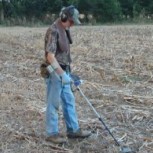

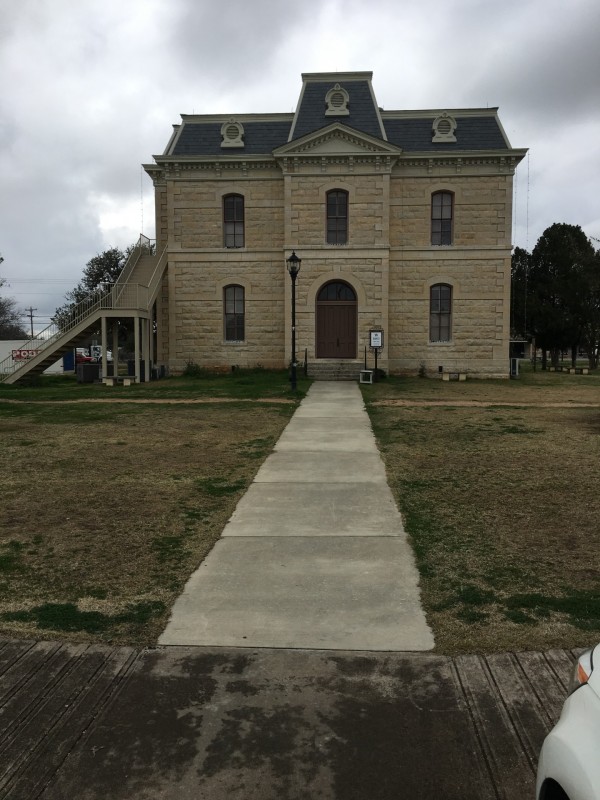
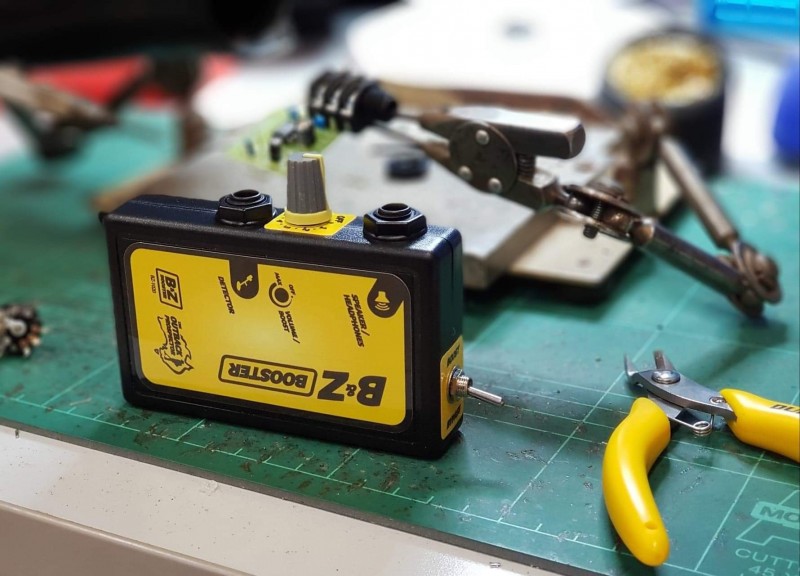
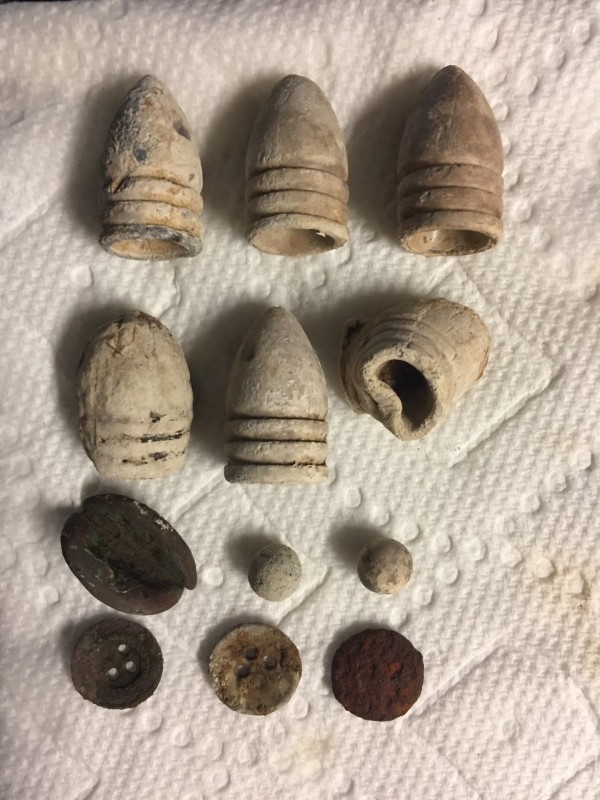

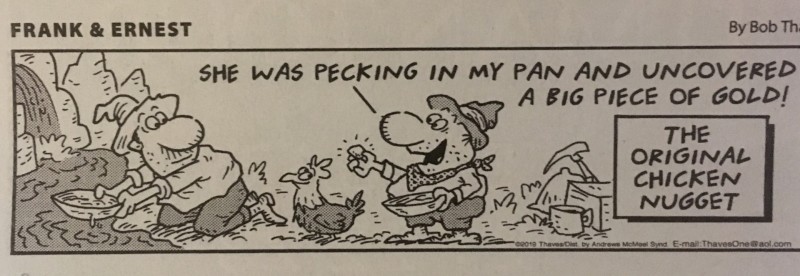

.thumb.jpg.77e4cb5bf39d44bdd2050d2edb7dfdb1.jpg)
